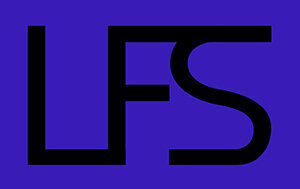Hercules and Antaeus I
Hercules and Antaeus I, 2016-2020
oil, alkyd resin and linseed oil on canvas
84 x 80 inches
SOLD
Study for Hercules and Antaeus I, 2020
graphite and watercolour on rag paper
9 x 9 inches / 23 x 23 cm - paper
16.5 x 16.25 inches / 42 x 41.3 cm - framed
The battle between Hercules and Antaeus was a theme popular in the renaissance both for its metaphoric and aesthetic prowess in painting and sculpture. The particular example of the sculpture I used as a foundation for this painting is of Roman origin, dating from the 2nd century A.D., and resides in the Uffizi collection in Florence, Italy. I have marveled at this sculpture multiple times for its pure artistic merit, decisive tensions and thematic brutality.
Hercules, on his journey to the Garden of Hesperides to collect golden apples as his Eleventh Labor, encountered Antaeus, the son of Poseidon and Gaia, who lived in the interior desert of Libya. Antaeus challenged all passers-by to wrestling matches, and since Greco-Roman wrestling typically attempted to force opponents to the ground, he won these matches easily, drawing his unrelenting prowess from contact with the earth, his mother. In the midst of his battle with Antaeus, Hercules recalled that his mother was Gaia and the source of his power. Realizing he could not defeat Antaeus by throwing him to the ground and pinning him, Hercules held Antaeus away from the ground and up in the air, whereby he lost his strength, enabling Hercules to crush him to death in a bear hug. After defeating Antaeus, Hercules continued on his journey to collect the golden apples of the Hesperides.
The theme of physical battling for superiority and domination is repeated continuously in Greek and Roman mythology. While Hercules uses his wit, still dominance by violence and killing is central to this narrative. The idea of Antaeus drawing his strength from his mother Gaia the earth is ripe with metaphor, as is Hercules denying him that contact. How long can we continue to resolve conflict by physical assault, brutality and bloodshed, no matter how intelligent we think we are? Why was Antaeus, while so connected to his mother Gaia, the metaphoric spiritual embodiment of all life, defined by aggressive and determined to challenge and kill all who happened to pass through his realm? What manner of strength, derived from the ancestral mother of all life, could wreak so much carnage?
These classic exemplars of destructive standards and ancient pernicious themes have infused Western culture and civilization with never ending violent archetypes, combative patterns and destructive models—a paradigm which I feel strongly needs to change in order for the human race to survive. Thus, I investigate these narratives while translating them, then obliterate them, to make room for a revised story moving forward.
—Lawrence Fodor
The small watercolour to the left is a study completed in the process of working on the larger painting. More watercolour studies for other paintings and the story behind them can be found on this page: Watercolours
Hercules and Anteaus I - a progression
There is a drawn and painted version of a specific work of art as the foundation or anchor for each painting. I may spend days, weeks or months analyzing the composition, structure, color and space of the historic work, rendering an “under-painted” version on the canvas. I am not making academic “reproductions” of the paintings; rather, they are translations, dissections and appropriations of sorts. I am utilizing the past to fortify my present.
Source November 2016 January 2017 August 2018 March 2020

Hercules and Anteaus I, detail








